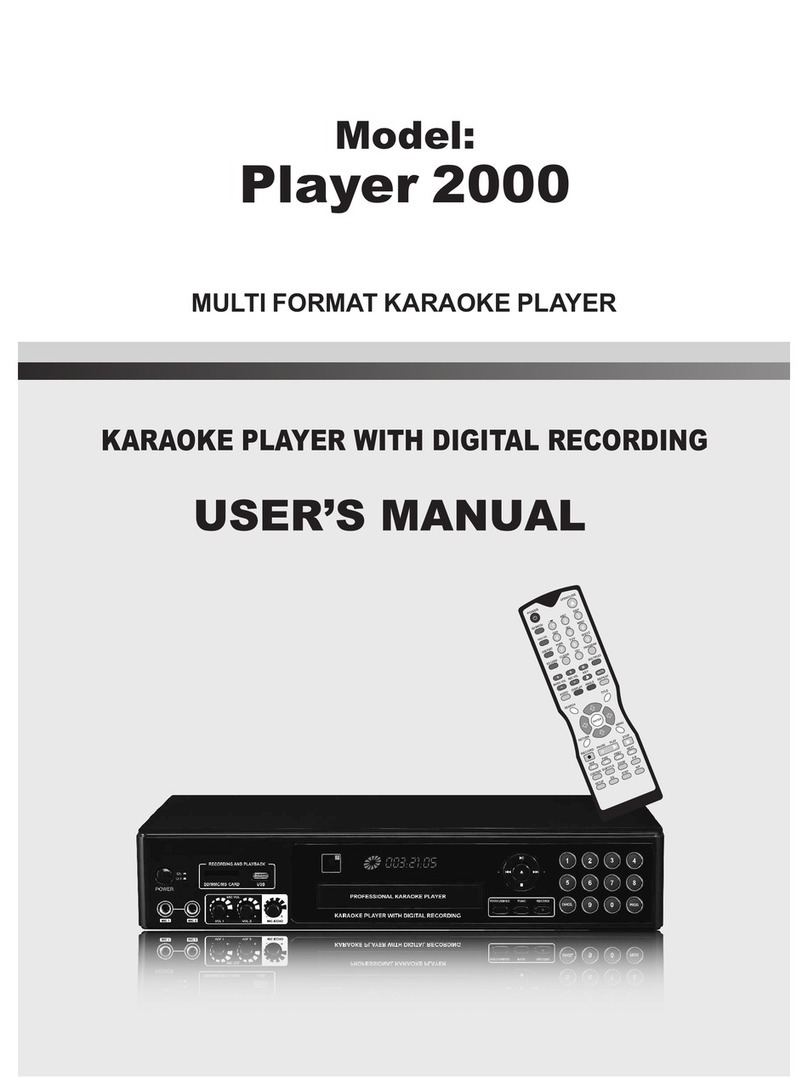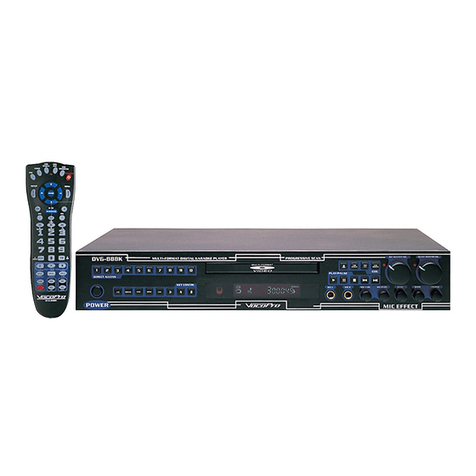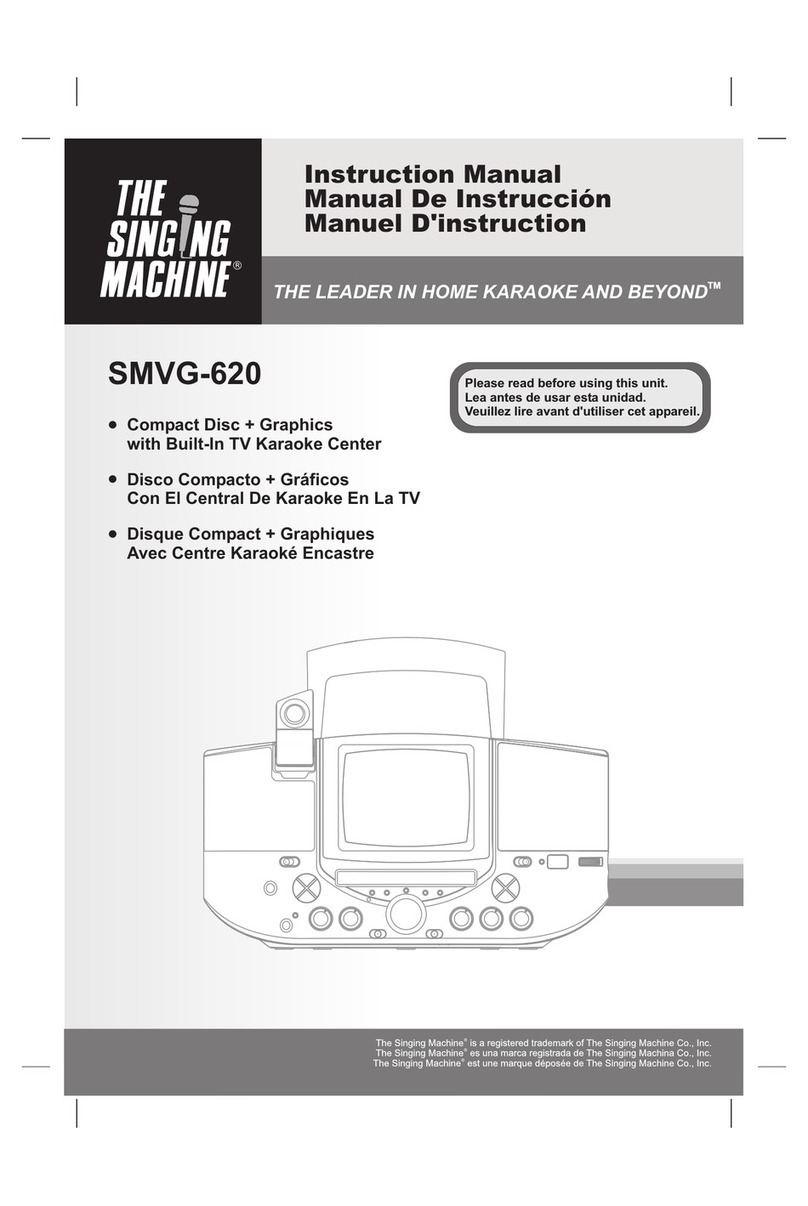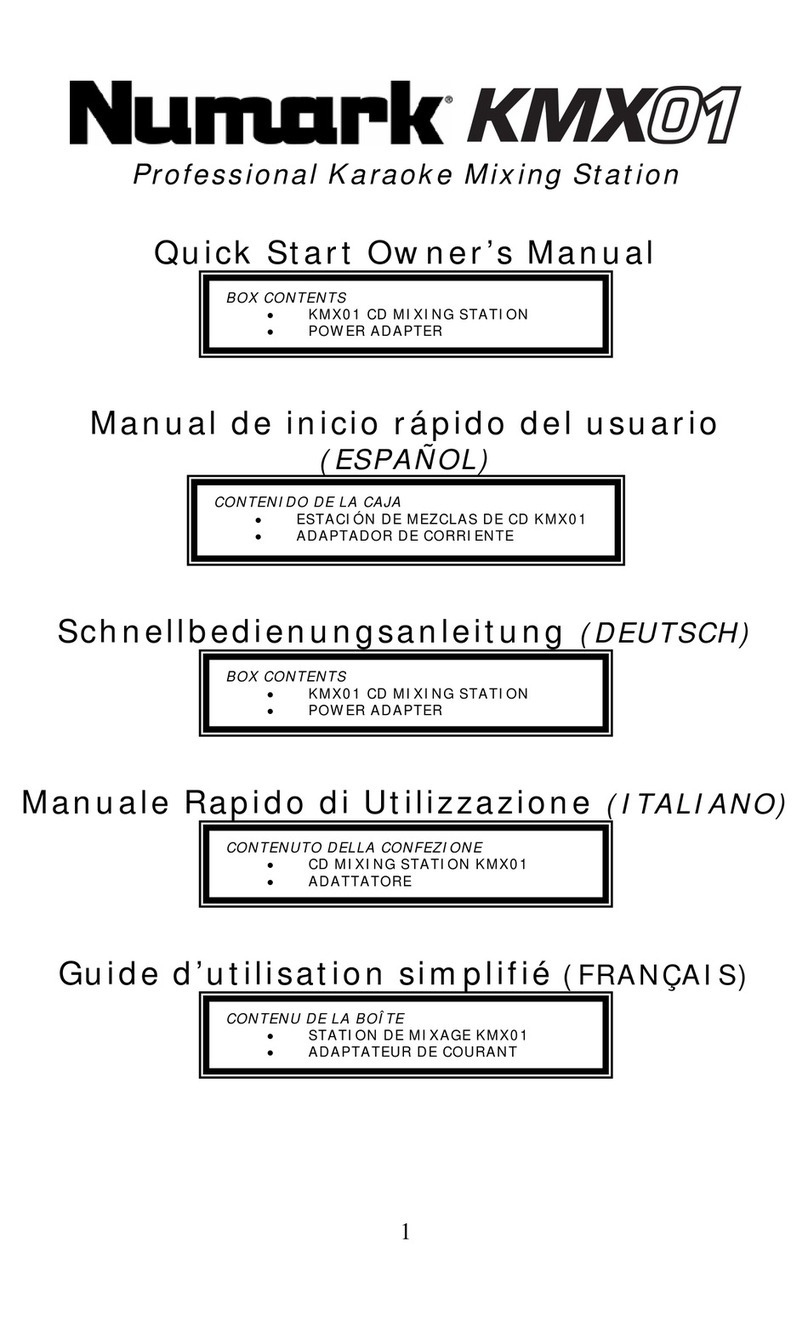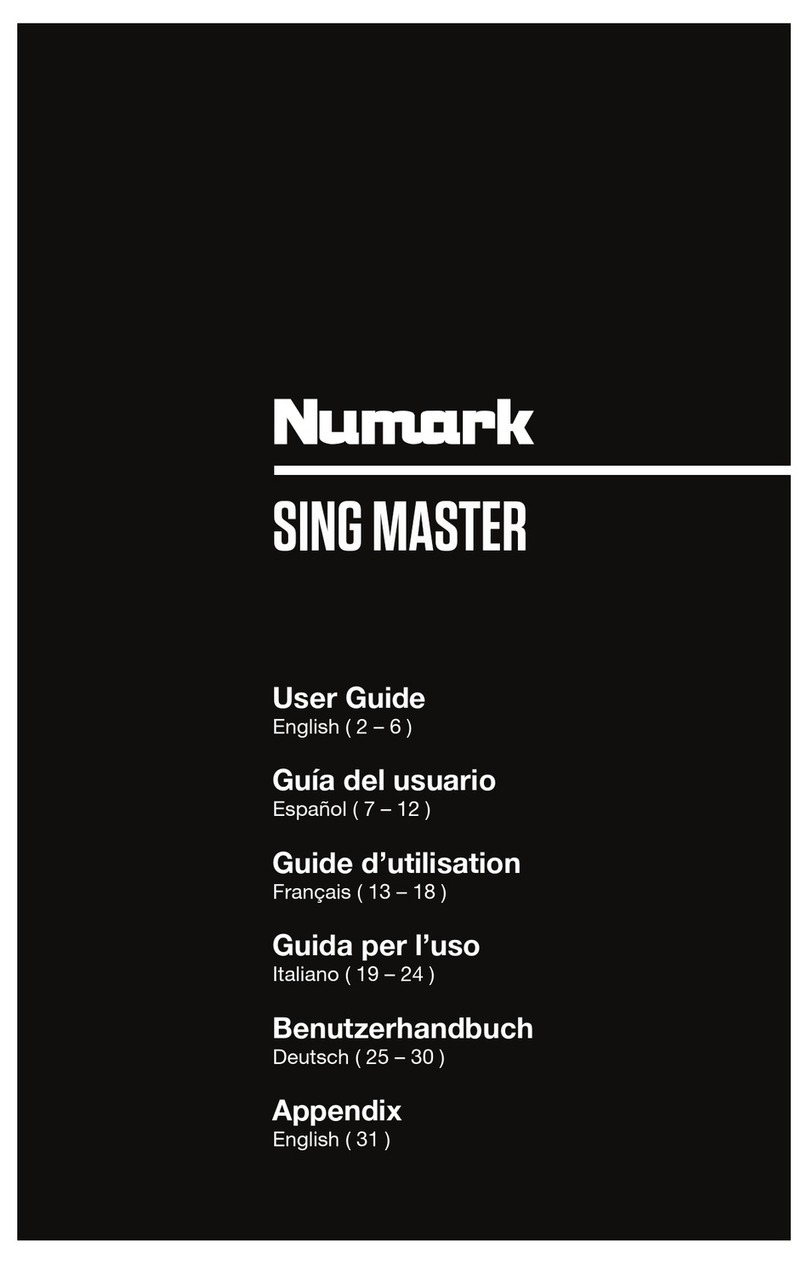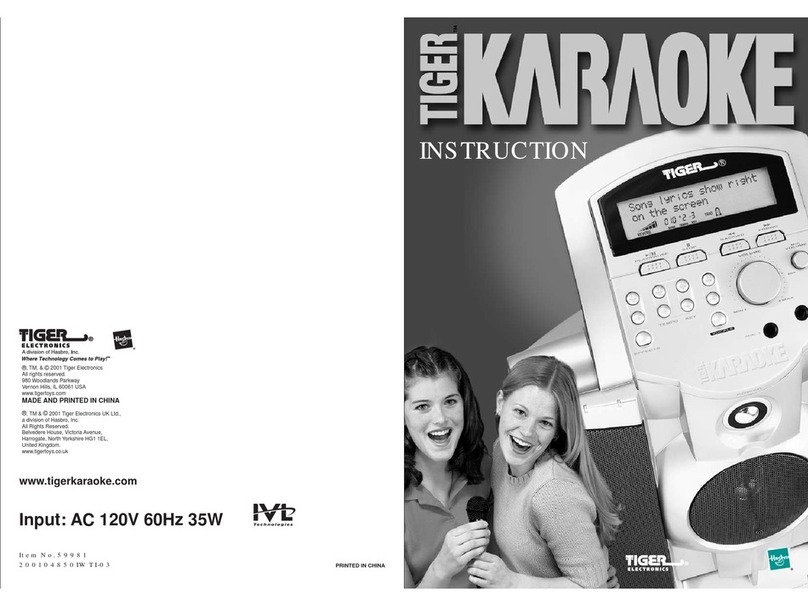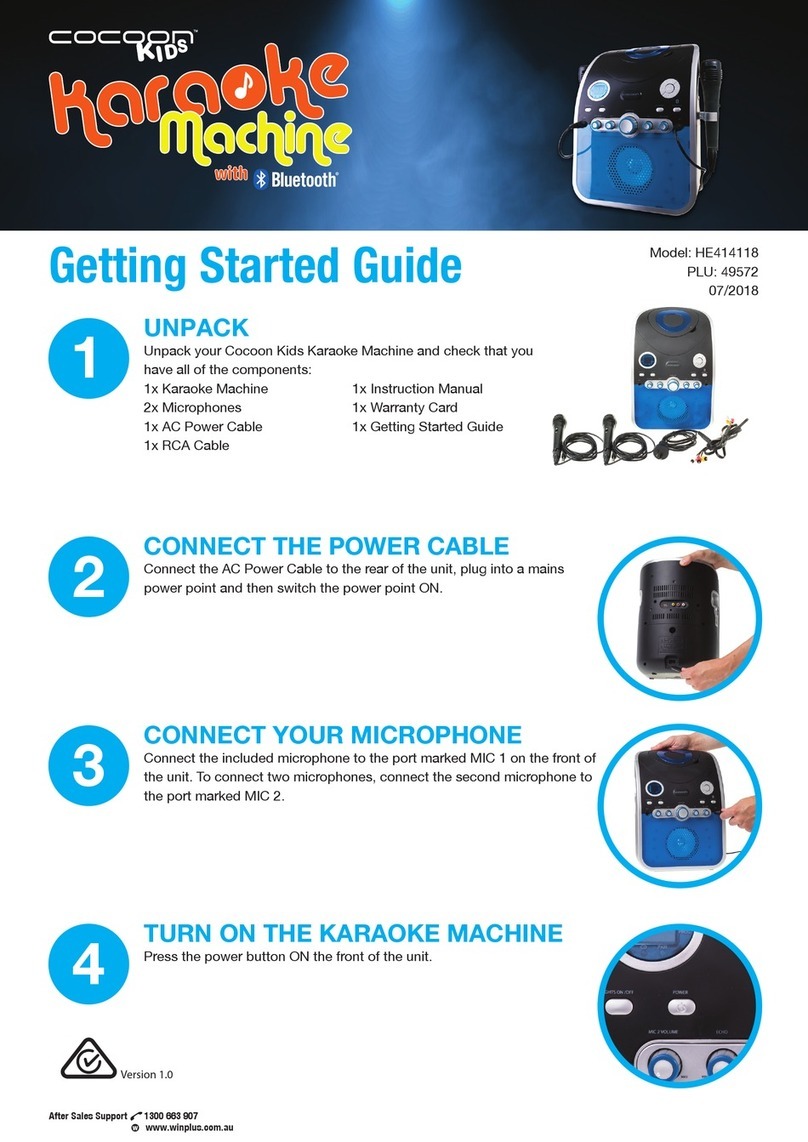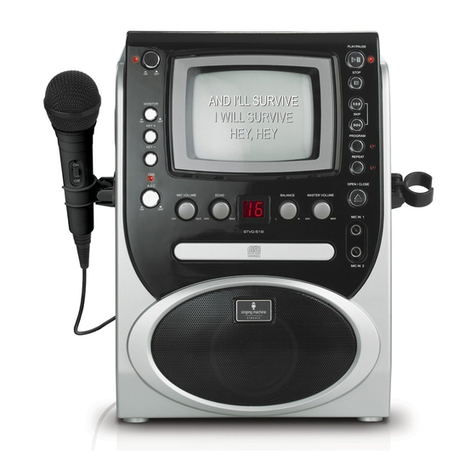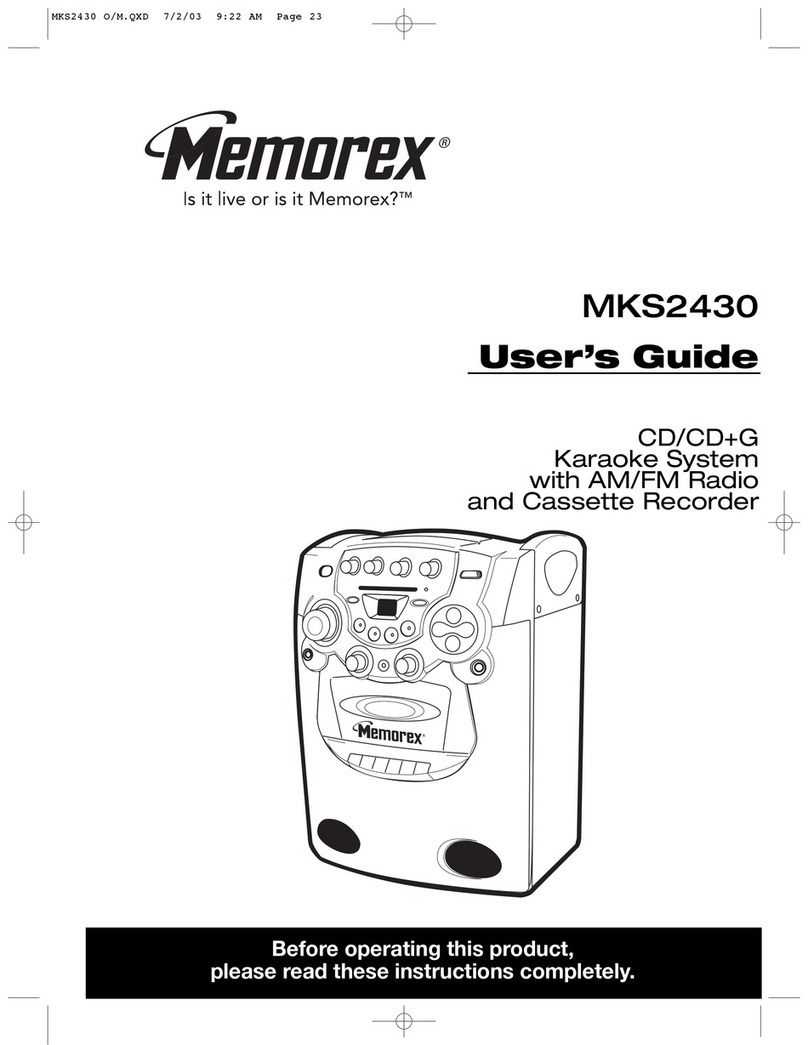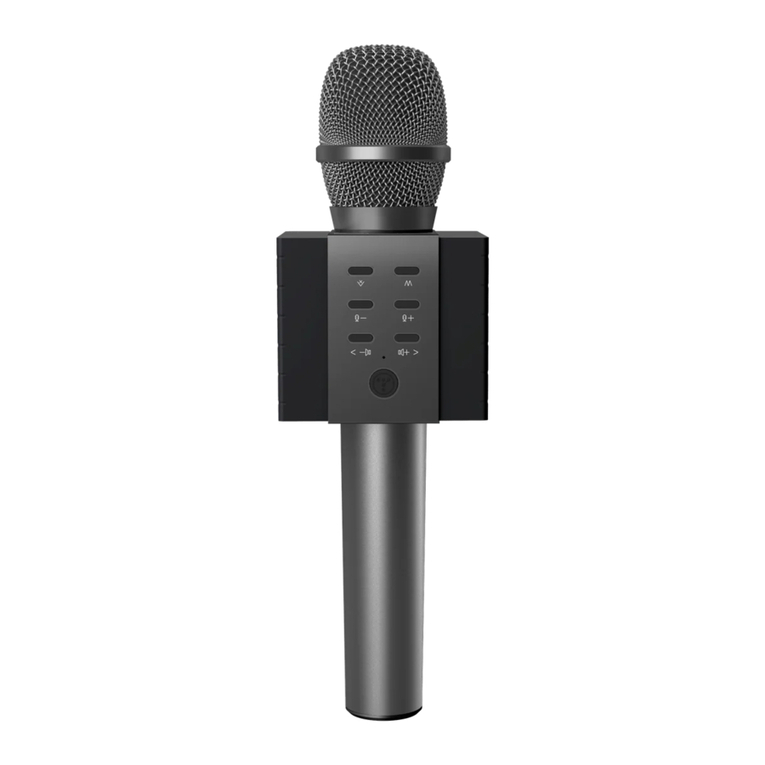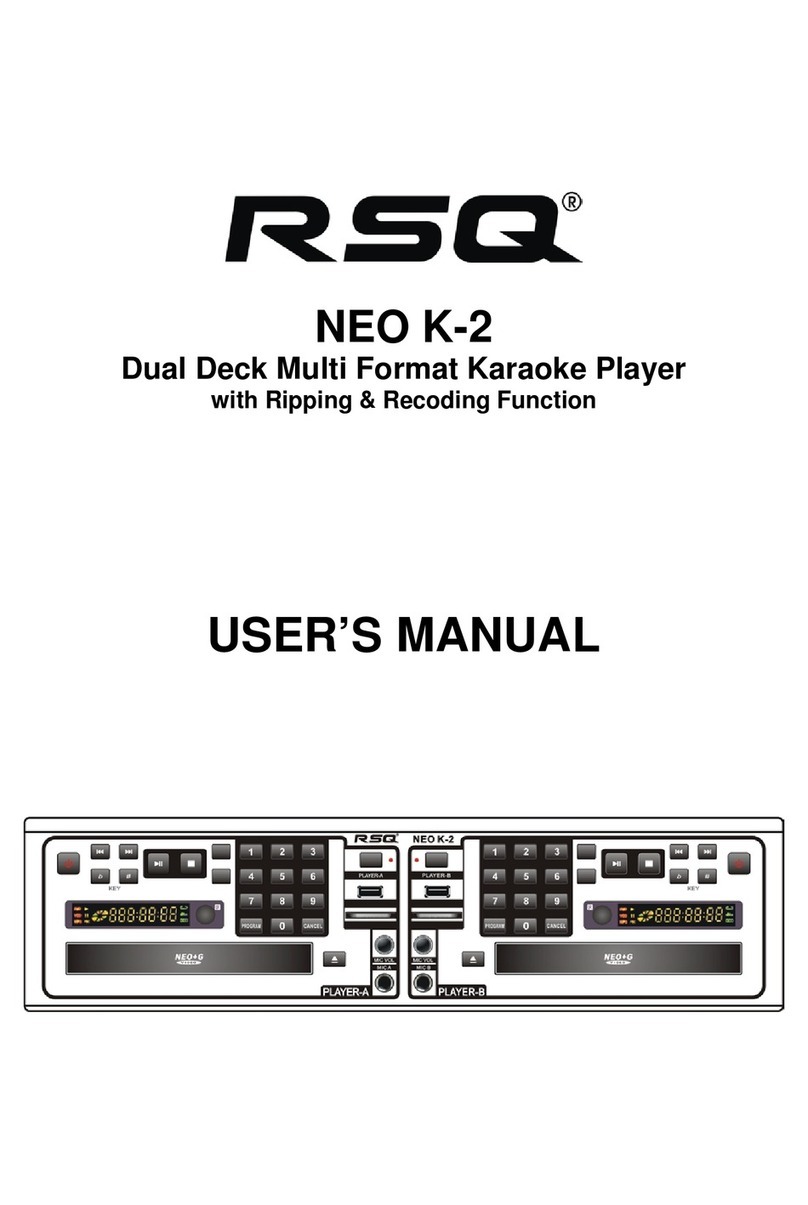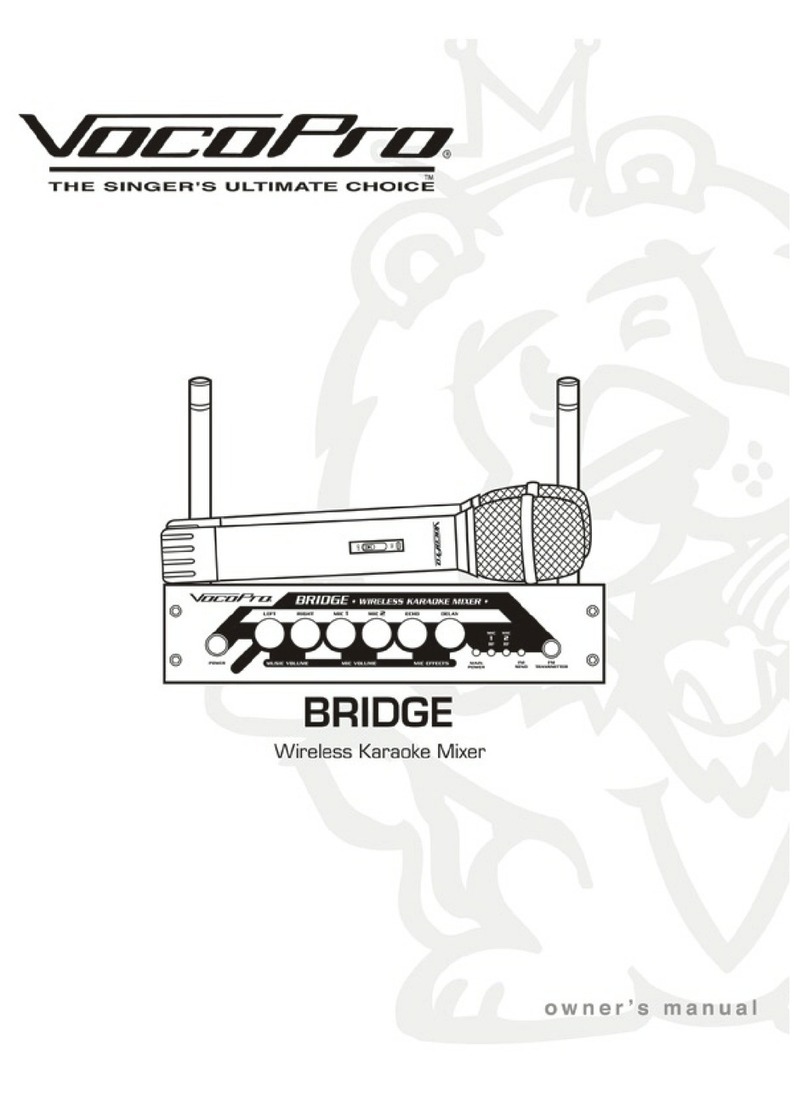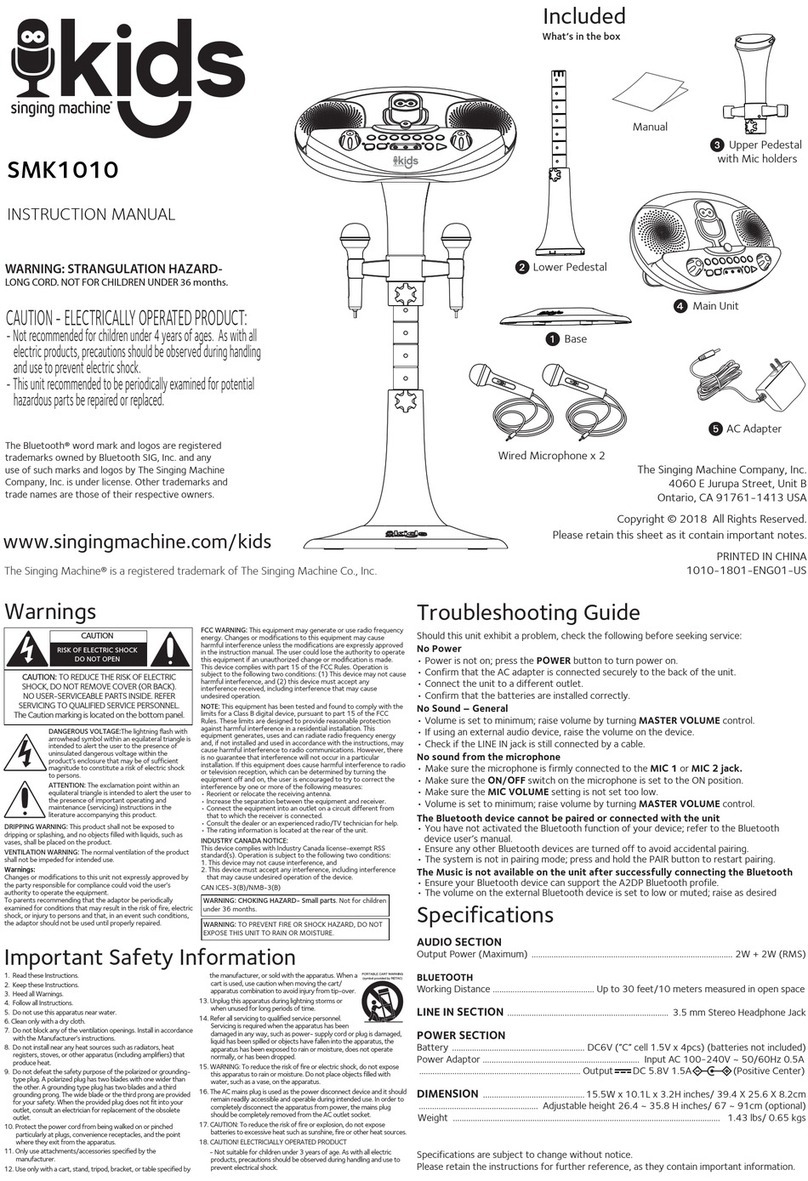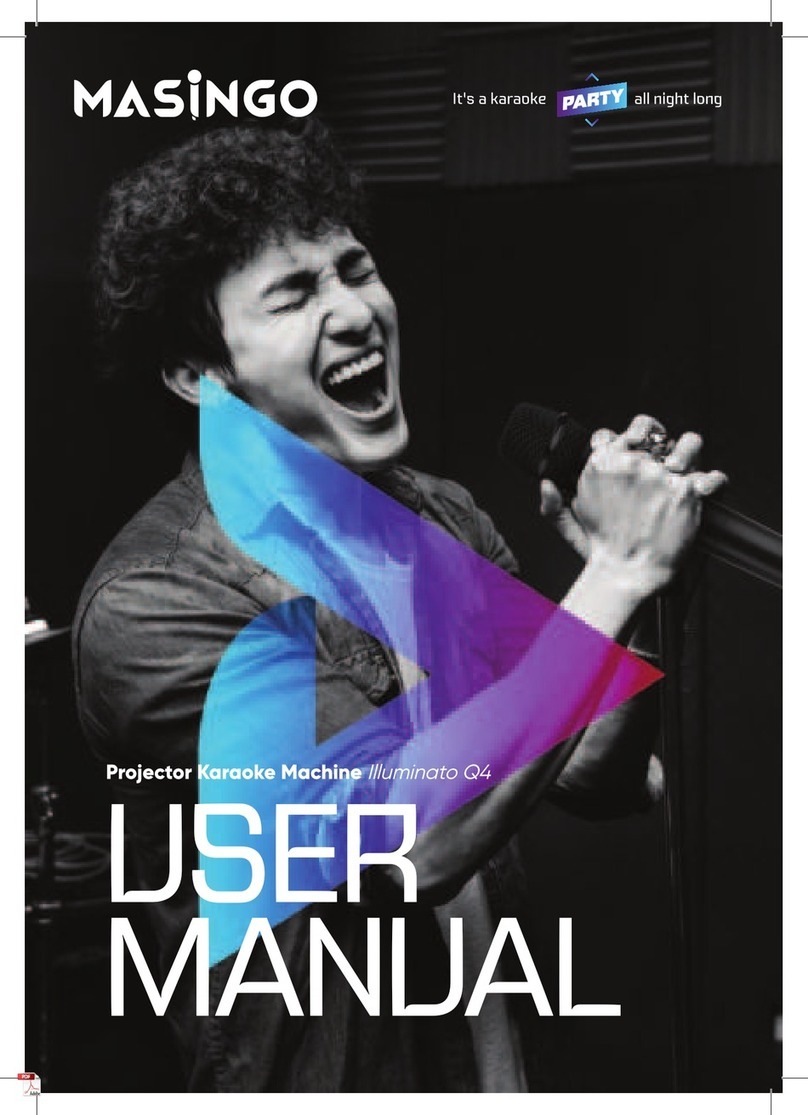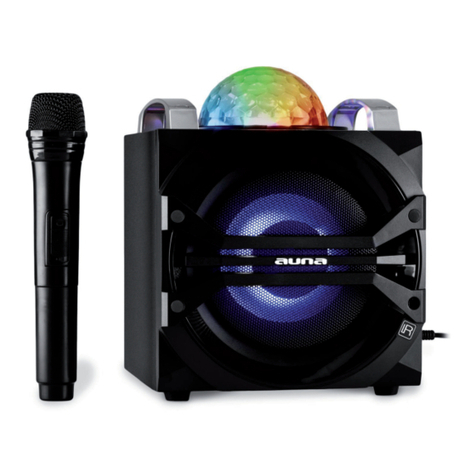5
CD PLAYER FEATURES
1. OPEN/CLOSE (Disc Tray
Open/Close) - Press to load or eject
the disc. Each press will open or close
the disc tray on the transport. NOTE:
Tray will not open unless the disc has
been paused. Tray will automatically
close after 30 seconds.
2. TIME (Time Button) - Switches the
time display between elapsed playing
time and remaining time on the track
and remaining time on the entire CD.
3. CONT/SING - Will cause just a single
track to play or all tracks in order by
pressing once or twice.
4. LCD DISPLAY - Indicates all the
functions, as they are occurring, with
the CD. These functions are explained
in the next section.
5. TRACK (Track Buttons) - Used to
select the track to be played.
6. Track 10 Button - This button is for
quickly advancing to higher tracks on a
CD.
7. PROGRAM - Depress this button and
the unit will stop and the program
indicator will light. Select each track to
be programmed and press the
PROGRAM button between selections.
You can program up to 20 tracks.
Press PLAY to start the program. To
exit and erase program, either hold the
program button down for more than 2
seconds while the unit is stopped, open
the disc tray, or turn off the power.
8. PITCH (Pitch Button) - Activates the
Pitch Slider.
9. PITCH SLIDER - The pitch can be
changed up to +/-16% by pressing the
PITCH button so the PITCH LED is lit,
then moving the sliding fader. The
pitch will not be changed if the PITCH
LED is off.
10. SEARCH WHEEL (OUTER RING) - 3
forward and 3 reverse speed positions
for searching through songs. The more
you turn the wheel in either direction
the faster you search through the
music.
11. PITCH BEND/JOG WHEEL (INNER
RING) - The jog wheel serves 2
functions depending on the current
mode.
a) The jog wheel will control a slow
frame search when the CD is not
playing. To set a new frame cue
point, spin the wheel then press
play when you have determined
the proper position. Press CUE to
return to the “CUE POINT”.
b) When both CD players are playing
a CD, the pitch bend function
allows the positioning of the bass
beats to be matched after the
pitch of each disc is matched.
Either player can “catch up” or
“fall back” to match the other
player. The jog wheel will
temporarily bend the pitch of the
music if the song is already
playing by rotating the wheel
clockwise to speed up or
counterclockwise to slow down. By
changing the pitch of one disc with
respect to the pitch of the other
disc, the beats can be matched.


